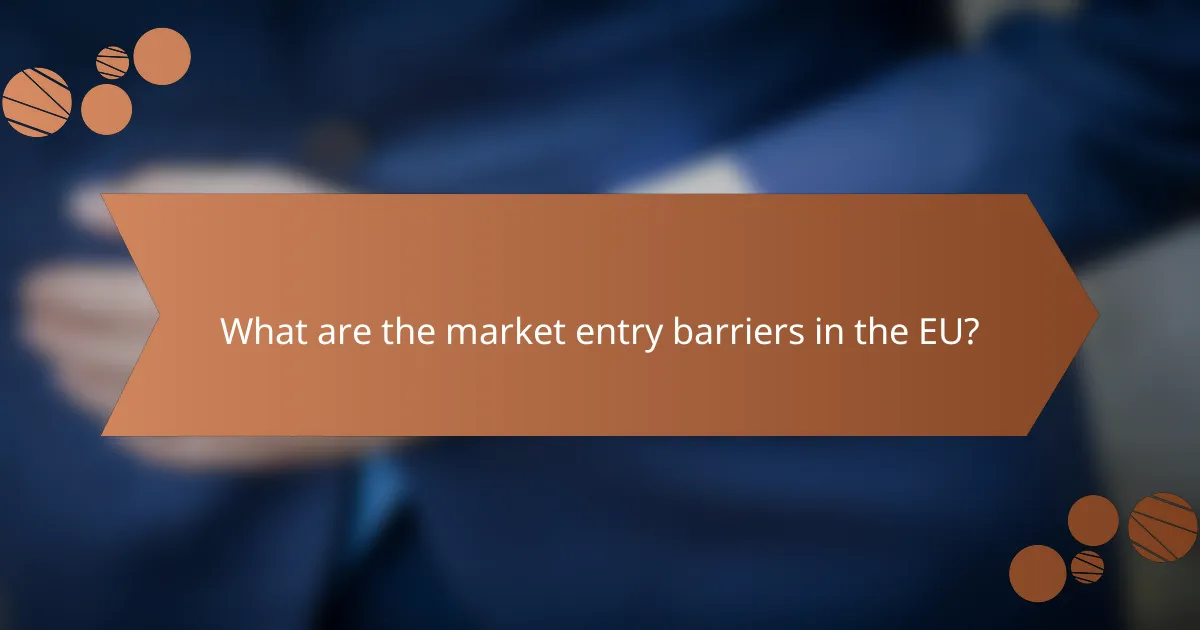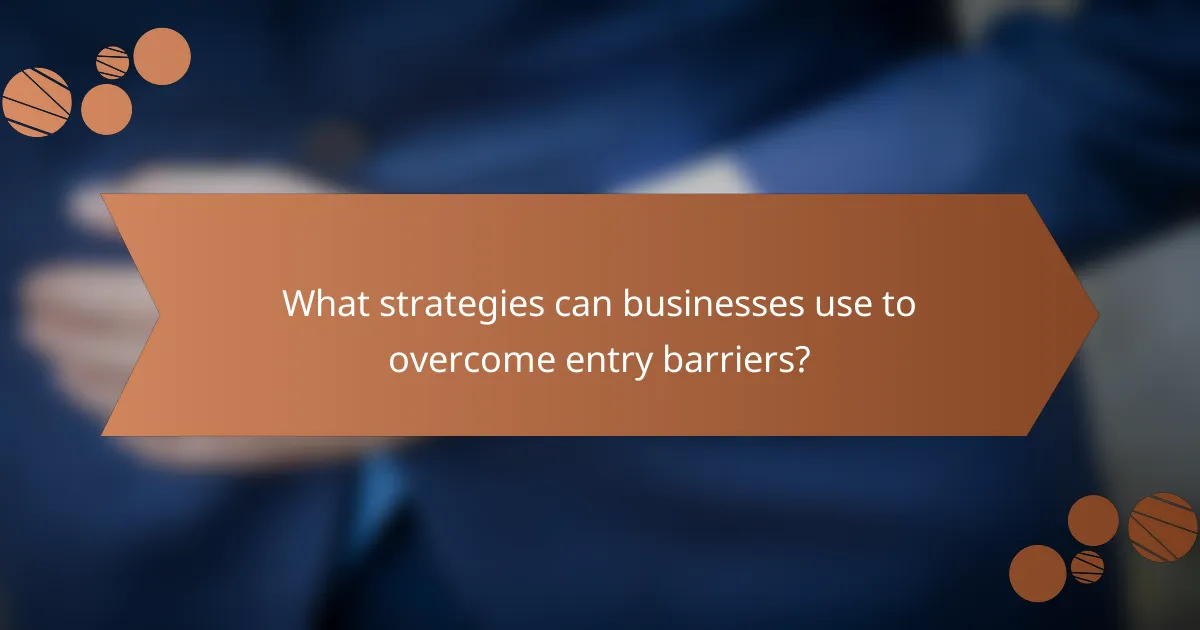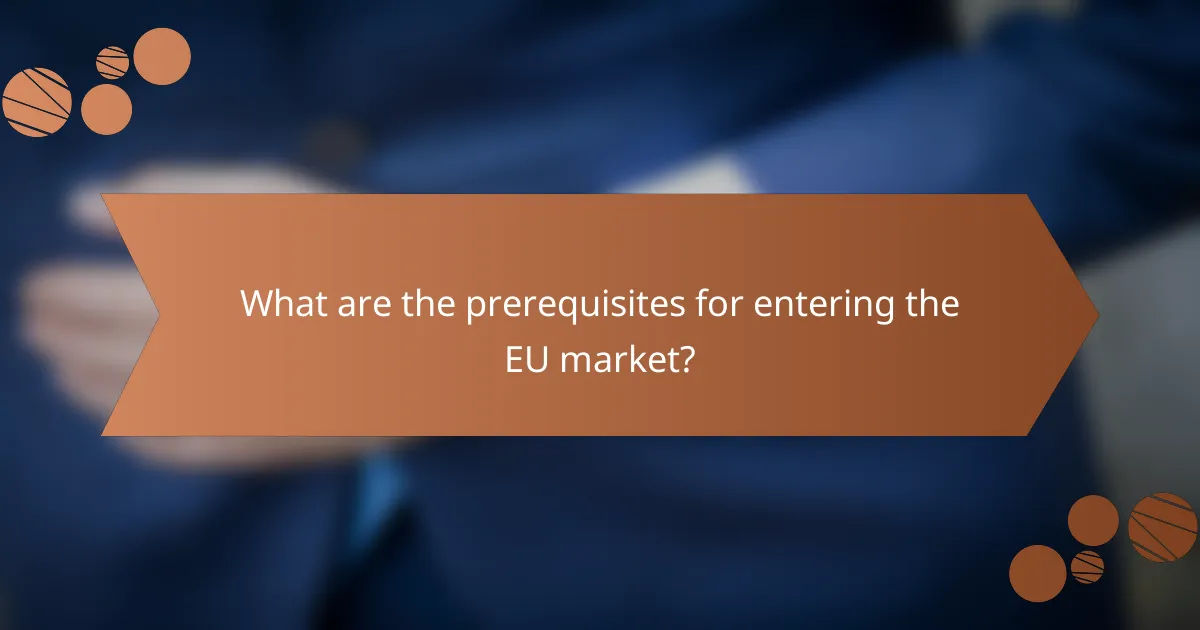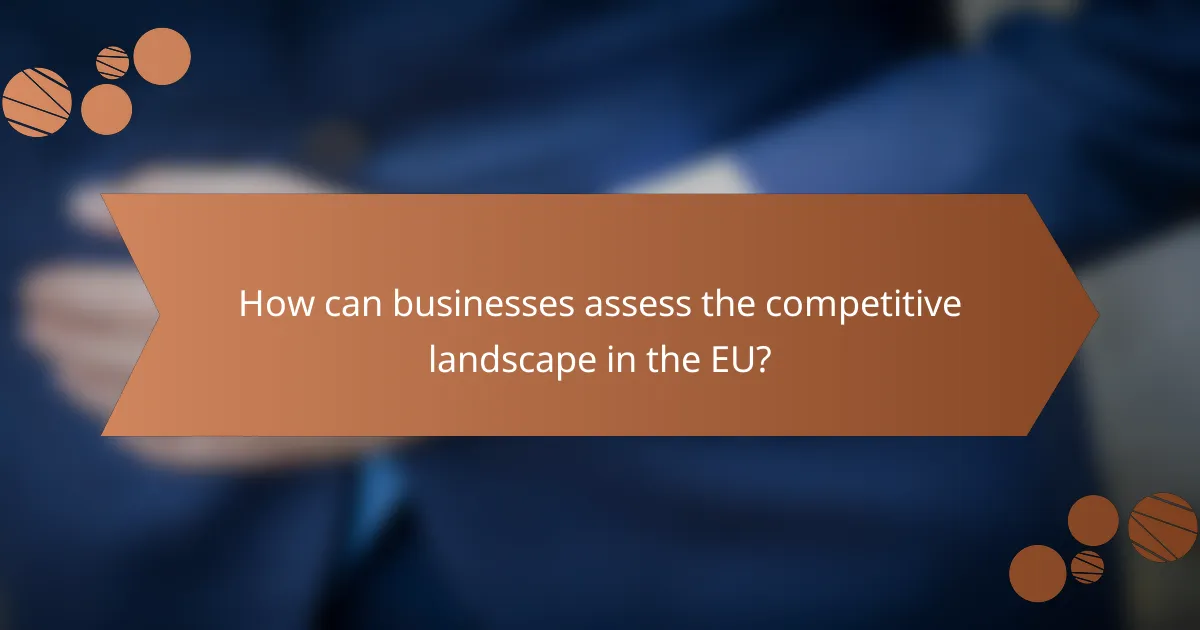Corporate expansion into the European Union presents unique challenges due to various market entry barriers, including regulatory compliance and cultural differences. Navigating EU regulations is crucial for businesses, as they dictate essential aspects such as data protection and consumer rights. To overcome these obstacles, companies can adopt strategies like market research and forming partnerships, which can significantly enhance their chances of successful market entry.

What are the market entry barriers in the EU?
Market entry barriers in the EU can significantly impact a company’s ability to establish operations. These barriers include regulatory compliance, cultural differences, high competition levels, intellectual property issues, and logistical constraints.
Regulatory compliance challenges
Entering the EU market requires adherence to a complex web of regulations, including product standards, safety requirements, and environmental laws. Companies must navigate the EU’s General Data Protection Regulation (GDPR) and various sector-specific directives, which can be time-consuming and costly.
To mitigate compliance challenges, businesses should conduct thorough market research and consider hiring local legal experts. This approach can help ensure that all regulatory requirements are met, reducing the risk of fines or operational delays.
Cultural differences
Cultural differences across EU member states can pose significant challenges for market entry. Variations in consumer behavior, language, and business etiquette can affect marketing strategies and customer engagement.
Companies should invest in cultural training and localization of their products and services. Understanding local customs and preferences can enhance brand acceptance and customer loyalty, making it easier to penetrate the market.
High competition levels
The EU market is characterized by high competition, with numerous established players across various sectors. New entrants must differentiate themselves to capture market share and attract customers.
Conducting a competitive analysis can help identify gaps in the market and inform product positioning. Strategies such as offering unique value propositions or leveraging innovative marketing techniques can help new businesses stand out.
Intellectual property issues
Intellectual property (IP) protection is crucial for companies entering the EU, as infringement can lead to significant financial losses. Understanding the EU’s IP laws and securing trademarks and patents is essential for safeguarding innovations.
Businesses should consider engaging IP professionals to navigate the registration process and enforce their rights. This proactive approach can help prevent potential disputes and enhance brand integrity in the market.
Logistical constraints
Logistical challenges, including supply chain management and distribution networks, can hinder market entry in the EU. Companies must consider transportation costs, customs regulations, and local infrastructure when planning their operations.
To address logistical constraints, businesses should develop a robust supply chain strategy that includes reliable local partners. Utilizing technology for inventory management and distribution can also streamline operations and reduce costs.

How do EU regulations impact corporate expansion?
EU regulations significantly shape corporate expansion by establishing a framework that businesses must navigate to enter and operate in the European market. These regulations cover various aspects, including data protection, trade tariffs, environmental standards, and consumer rights, each presenting unique challenges and considerations for companies.
Data protection laws (GDPR)
The General Data Protection Regulation (GDPR) is a critical piece of legislation that affects how companies handle personal data in the EU. Businesses must ensure compliance by implementing strict data protection measures, which can involve significant investment in technology and training.
Non-compliance can lead to hefty fines, often reaching millions of euros, making it essential for companies to prioritize data privacy from the outset. To navigate GDPR effectively, consider conducting regular audits, appointing a Data Protection Officer, and ensuring transparent communication with customers about data usage.
Trade tariffs and quotas
Trade tariffs and quotas can impact the cost and feasibility of entering the EU market. Tariffs may increase the price of imported goods, affecting competitiveness, while quotas can limit the quantity of products that can be imported without additional duties.
Companies should research specific tariffs applicable to their products and consider strategies such as local manufacturing or sourcing to mitigate costs. Engaging with trade experts or consultants can provide insights into navigating these barriers effectively.
Environmental regulations
Environmental regulations in the EU are stringent and aim to promote sustainability and reduce ecological impact. Companies must comply with various directives related to emissions, waste management, and product lifecycle, which can require substantial changes to operations.
Firms should conduct environmental impact assessments and adopt eco-friendly practices to align with EU standards. This not only helps in compliance but can also enhance brand reputation among environmentally conscious consumers.
Consumer protection laws
Consumer protection laws in the EU are designed to safeguard buyers’ rights, impacting how businesses market and sell their products. Companies must ensure transparency in pricing, clear return policies, and accurate advertising to avoid legal repercussions.
Understanding these laws is crucial for maintaining customer trust and avoiding penalties. Businesses should implement training programs for staff on consumer rights and regularly review marketing materials to ensure compliance with EU regulations.

What strategies can businesses use to overcome entry barriers?
Businesses can employ various strategies to navigate market entry barriers, including thorough market research, forming partnerships, adapting products, and leveraging e-commerce platforms. These approaches help mitigate risks and enhance the chances of successful expansion into new markets.
Market research and analysis
Conducting comprehensive market research is essential for understanding local consumer behavior, competitive landscapes, and regulatory requirements. This analysis should include both qualitative and quantitative data to identify potential challenges and opportunities.
Utilize tools such as surveys, focus groups, and industry reports to gather insights. Pay attention to cultural nuances and preferences that may influence purchasing decisions, as these can significantly impact market entry strategies.
Partnerships with local firms
Forming partnerships with established local firms can provide valuable insights and resources that facilitate market entry. Local partners often have a better understanding of the regulatory environment and consumer preferences, which can help navigate entry barriers more effectively.
Consider joint ventures or strategic alliances that allow for shared risks and costs. This collaboration can also enhance credibility with local customers and stakeholders, increasing the likelihood of success.
Adapting products to local preferences
Adapting products to meet local tastes and cultural norms is crucial for successful market entry. This may involve modifying features, packaging, or pricing strategies to align with consumer expectations.
Conduct pilot testing with a small segment of the target market to gather feedback before a full launch. This approach helps ensure that the product resonates with local consumers and meets their specific needs.
Utilizing e-commerce platforms
Leveraging e-commerce platforms can significantly reduce entry barriers by providing access to a broader audience with lower overhead costs. Online marketplaces allow businesses to test products and services in new markets without the need for a physical presence.
Focus on optimizing online sales channels by tailoring marketing strategies to local preferences and utilizing local payment methods. Ensure compliance with local regulations regarding e-commerce to avoid legal pitfalls and enhance customer trust.

What are the prerequisites for entering the EU market?
Entering the EU market requires a solid understanding of local regulations, establishing a local presence, and building a reliable supply chain network. These prerequisites ensure compliance with EU laws and enhance operational efficiency.
Understanding local regulations
Familiarizing yourself with local regulations is crucial for successful market entry in the EU. Each member state has specific laws regarding product standards, consumer protection, and environmental regulations that must be adhered to.
Key regulations include the General Data Protection Regulation (GDPR) for data privacy and the CE marking for product safety. Companies should consider consulting legal experts to navigate these complex requirements effectively.
Establishing a local presence
Establishing a local presence can significantly enhance your credibility and operational effectiveness in the EU market. This may involve setting up a subsidiary, partnering with local firms, or hiring local staff to better understand consumer preferences and market dynamics.
Having a local office can also facilitate smoother communication with stakeholders and compliance with local laws. Consider the costs associated with this step, as they can vary widely based on location and business model.
Building a supply chain network
Building a robust supply chain network is essential for efficient operations in the EU. This involves identifying reliable suppliers, logistics partners, and distribution channels that align with your business needs.
Evaluate potential partners based on their compliance with EU regulations, reliability, and cost-effectiveness. Establishing relationships with local suppliers can also help mitigate risks associated with international shipping and customs delays.

How can businesses assess the competitive landscape in the EU?
Businesses can assess the competitive landscape in the EU by analyzing market conditions, regulatory frameworks, and competitor strategies. Understanding these elements helps identify opportunities and threats, enabling informed decision-making for market entry.
Conducting SWOT analysis
A SWOT analysis evaluates a business’s Strengths, Weaknesses, Opportunities, and Threats within the EU market. This framework allows companies to pinpoint internal capabilities and external challenges, which is crucial for strategic planning.
When conducting a SWOT analysis, consider local market trends, regulatory requirements, and cultural factors that may influence consumer behavior. For example, a strong brand reputation in one EU country may not translate to another due to differing consumer preferences.
Identifying key competitors
Identifying key competitors involves researching businesses that offer similar products or services within the EU. This includes analyzing their market share, pricing strategies, and customer engagement practices.
Utilize tools such as market reports, industry publications, and competitor websites to gather insights. Pay attention to both established players and emerging startups, as they can significantly impact market dynamics. Understanding their strengths and weaknesses can inform your own strategic positioning.



